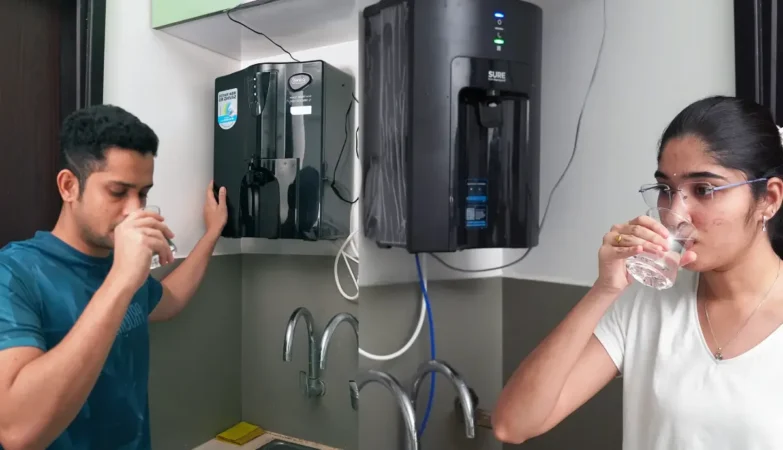Introduction
The demand to find a convenient and discreet orthodontic solution has been growing over the past few years, with more adults and teenagers becoming interested in alternatives to metal braces. The most significant options are teeth aligners, which are removable devices used to straighten teeth slowly. The increased interest in minimally visible solutions has spawned questions regarding availability, efficacy, and accessibility- in urban centres where aesthetics and busy lifestyles influence healthcare decisions. This paper discusses the procedure of acquiring teeth clear aligners in Singapore, what it entails, who opts to use it, and why many individuals are finding the solution increasingly convenient, client-friendly, and devoid of any pain.
1. The mechanism of teeth aligners
Teeth aligners work by placing gentle and controlled pressure on teeth via a series of specially fitted trays. Every tray is made to move teeth by a small degree; by using several trays, one after another, teeth are moved into the desired position. The planning of the treatment usually starts with diagnostic records using digital scans or impressions, photographs and X-rays, and with the help of these digital files, the clinicians can simulate the moves needed to treat the tooth. The simulation guides the production of the aligner sets, whereby it checks in regularly to ascertain progress. It is predictable in terms of biomechanics across a wide range of mild-to-moderate alignments and offers the convenience of removability to eat and clean teeth.
2. Indications and patient selection
Clear removable systems are not ideal in every case, and proper patient selection is important. Teeth aligners are generally applied to correct crowding, spacing, mild to moderate bite problems, and some cosmetic issues. Candidates who practice good oral hygiene, who have realistic expectations, and who are amenable to following the recommended wear time are the best. By comparison, more complicated skeletal malocclusions, extreme malocclusions, or patients with large vertical discrepancies may be better treated with conventional orthodontics or surgical orthodontics. A good clinical examination by a qualified orthodontist decides the candidacy and the expected results.
3. Treatment planning and technology
Digital tools are fundamental to modern treatment planning of teeth aligners. The 3D scans help to eliminate the uncomfortable putty impressions in most practices and make it faster to create virtual models. Computer-assisted simulations of the treatment plan, the sequence of tooth positions, allow the clinician to foresee issues that may arise. These computerized designs are then utilized to construct the trays in a precise manner. Innovations in materials science have enhanced tray fit and force delivery, which have reduced discomfort and improved predictability. Remote monitoring tools via technological integration enable clinicians to check up on patients in between visits.
4. Wearing protocols and patient compliance
The effectiveness of the interventions depends on high compliance with the wearing regimen. Aligners should be worn 20 to 22 hours a day and only removed to eat, to consume something other than water, and to clean the mouth. Normally, one or two aligners are utilized simultaneously, each lasting one or two weeks before being substituted with the other in the sequence. The timing of replacement varies with the patient. Programmed reviews and compliance indicators can be used to facilitate enforcement and early detection of deviations. Although the aligners are removable, the responsibility of wearing them constantly is delegated to the patient, and motivation and habit are essential parts of the treatment process.
5. Oral health benefits and considerations
The ease of oral hygiene maintenance during treatment is one of the most often mentioned advantages of teeth clear aligners in Singapore and other countries. The brackets can be removed easily to allow normal brushing and flossing, which may mitigate the possibility of tooth decalcification and gum inflammation. Patients must also maintain quite strict hygiene, not only of the teeth but also the aligners themselves, because poor hygiene and sanitary practices can lead to discolouration, plaque and bad breath. To ensure that dental health does not suffer during treatment, clinicians focus on the importance of preventive care, such as professional cleanings, and instructions on aligner care.
6. Aesthetic, social and lifestyle advantages
The low visual impact is one of the main reasons why clear removable systems have become popular. Others who would have postponed orthodontic treatment because of professional and social reasons now find aligners helpful. The almost invisible aspect of modern materials enables patients to seek correction without significantly changing personal appearance. Additionally, the possibility to take off aligners during special events or daily activities makes it more flexible. In highly populated urban settings where looks and practicality are valued highly; such a blend of style and lifestyle suitability will be the reason behind the rising popularity of teeth clear aligners in Singapore.
7. Prices, access, and local factors
Its price and accessibility are defined in relation to the area and the provider, and a consumer must consider both the quality of teeth aligners and the financial side. The price is influenced by initial consultations, diagnostic imaging, the number of sets of aligners required, and the involvement of the treating clinician in overseeing the progress. Most practices offer financing plans or phased payment plans to make it more accessible. In locations where the demand is high in discrete orthodontic care, there may be the possibility that the market will be flooded with different clinics and a variety of treatment choices; however, patients should make sure that they base their choice on credentialing, experience and documented outcomes rather than on price.
8. Managing expectations and long-term care
Orthodontic success depends upon realistic expectations regarding the duration and outcome. Some cases achieve their intended alignment in months, others in years, and still others may need additional stages or adjunctive treatments. Retention after active treatment is also significant; in the absence of proper retention devices, there is a risk of relapse. Medical professionals usually prescribe fixed or removable retainers to hold the teeth in their new positions. Long-term follow-up is a way to maintain the investment in treatment and prevent any slight changes promptly, thus maintaining the durability of the results achieved with teeth aligners.
Conclusion
Teeth aligners are a recent innovation in modern orthodontics that offer a non-obtrusive appearance, and clinically feasible tooth relocation in appropriate patients. Advances in technology, new materials and more sophisticated treatment planning have increased their uses, and they are now becoming a popular choice with many patients because of their functionality and aesthetics. The interest towards teeth clear aligners in Singapore can be traced to a wider concern with a more patient-friendly and less invasive dental practice.
When people have all the information they need on how much effort it takes and what post-treatment retention measures are required, they will be able to make a wider choice of retaining a healthier and even more confident smile.










